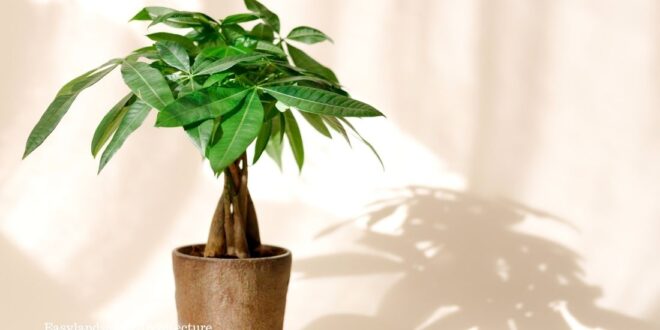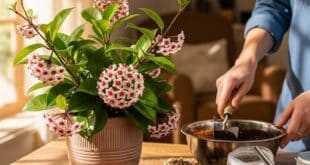Meet The Money Tree
The Money Tree (Guiana Chestnut) is a beloved houseplant, admired for its braided trunk and lush, palmate leaves. Native to the wetlands of Central and South America, this plant is not only a stunning decorative addition to homes and offices but is also believed to bring good fortune and financial prosperity according to Feng Shui principles. Its symbolic value, combined with its relatively low-maintenance nature, makes it a popular choice for plant enthusiasts of all skill levels.
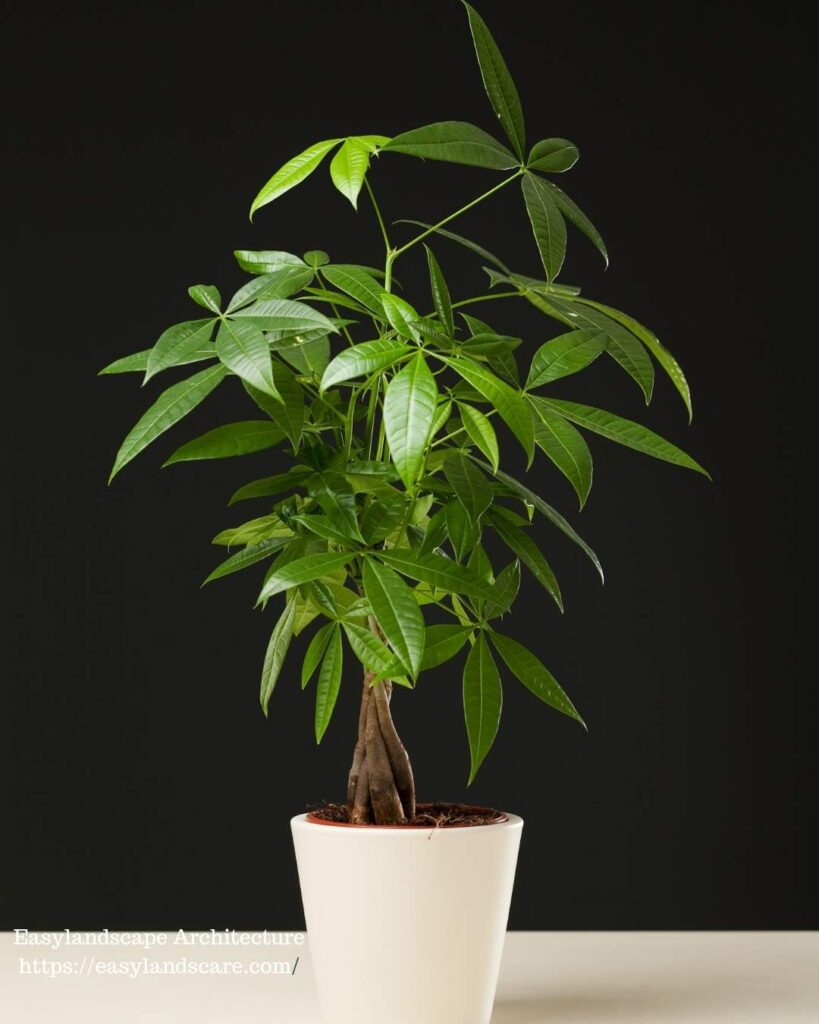
In this detailed guide, we’ll cover everything you need to know about Guiana Chestnut & Money Tree care, including its light, watering, humidity, soil, pruning needs, and how to troubleshoot common issues. By following these tips, you can ensure your Money Tree remains healthy, vibrant, and a source of lush greenery for years to come.
Why Choose a Money Tree?
The Guiana Chestnut is more than just a houseplant—it’s a symbol of good luck and prosperity. Its unique braided trunk adds a sculptural element to any space, while its vibrant green leaves create a calming and inviting atmosphere.
Benefits of the Guiana Chestnut & Money Tree Plant
- Feng Shui Benefits: It’s believed to attract positive energy, good fortune, and financial success.
- Air-Purifying Qualities: Like many houseplants, the Guiana Chestnut & Money Tree helps improve indoor air quality by filtering toxins.
- Low Maintenance: It’s adaptable to a variety of indoor conditions, making it perfect for beginners.
- Aesthetic Appeal: The braided trunk and lush foliage make it a visually striking addition to any room.
Whether you’re looking for a plant to brighten your space or a meaningful gift for someone special, the Guiana Chestnut is an excellent choice.
Essential Tips for Money Tree Care
Light Requirements in Guiana Chestnut Care

Providing the right lighting is crucial for the health and growth of your Money Tree.
- Bright, Indirect Light: The Guiana Chestnut & Money Tree thrives in bright, indirect sunlight. Too much direct sunlight can scorch its leaves, while too little light can slow its growth.
- Best Window Placement: East or west-facing windows are ideal, as they provide the perfect balance of light intensity.
- South-Facing Windows: If placing near a south-facing window, use sheer curtains to diffuse the sunlight, especially during the hottest parts of the day.
- Tolerates Low Light: While the Guiana Chestnut can survive in lower light conditions, its growth may become slower, and its leaves may lose some vibrancy. Avoid placing it in dark corners.
- Rotate Regularly: Since Guiana Chestnut & Money Trees are phototropic (they grow toward light), rotate the plant by a quarter turn every week or two to ensure even growth and a balanced shape.
Watering and Moisture in Money Tree Care
Watering your Money Tree correctly is vital to prevent overwatering, which is the most common cause of plant issues.
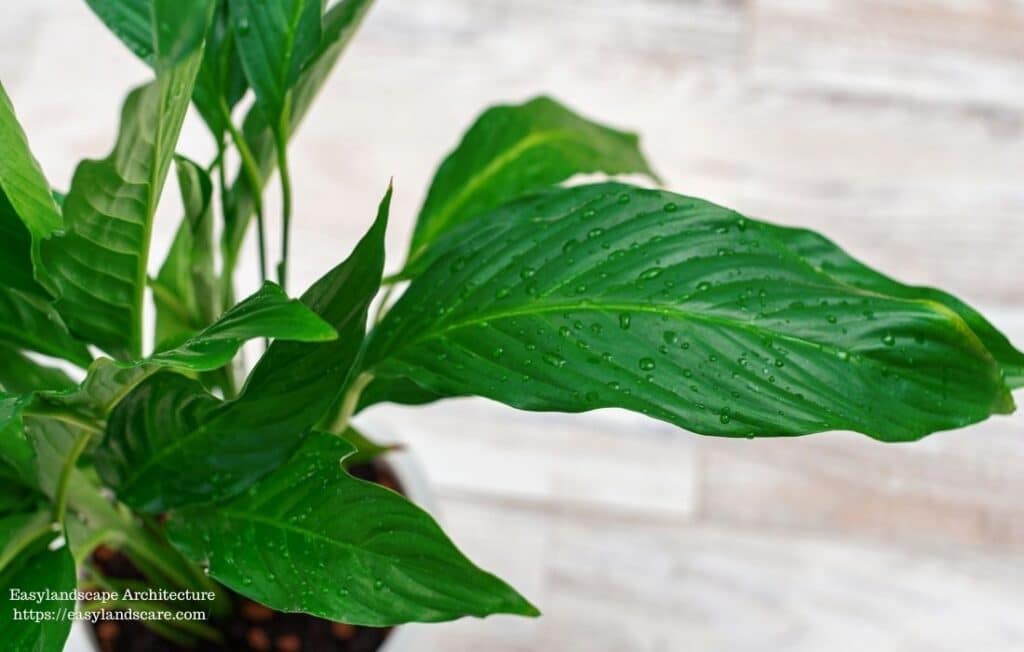
- Check Soil Before Watering: Allow the top 2-4 inches of soil to dry out before watering. Use your finger or a moisture meter to check the soil’s dryness.
- Water Thoroughly: When watering, ensure the water reaches the roots by watering until it drains from the bottom of the pot. Always discard excess water in the saucer to prevent root rot.
- Avoid Overwatering: Overwatering can cause yellowing leaves, leaf drop, or even a mushy trunk base due to root rot.
- Reduce Watering in Winter: During the dormant winter months, water less frequently, allowing the soil to dry out more between waterings.
Humidity Preferences in Guiana Chestnut & Money Tree Care
The Money Tree is not as demanding as some tropical plants when it comes to humidity, but providing the right conditions can help it thrive.
- Average Indoor Humidity: Guiana Chestnuts do well in typical indoor humidity levels, making them suitable for most homes and offices.
- Optional Increased Humidity: During dry winter months, you can increase humidity by using a pebble tray, a humidifier, or grouping plants together.
Temperature Preferences in Guiana Chestnut Care
Money Trees prefer stable temperatures and are sensitive to extreme conditions.
- Ideal Temperature Range: Keep the plant in a room with temperatures between 18-24°C (65-75°F).
- Avoid Drafts and Heat Sources: Protect your Money Tree from cold drafts, heating vents, and sudden temperature fluctuations, as these can stress the plant and cause leaf drop.
Soil Requirements in Money Tree Care
The right soil mix ensures proper drainage and healthy root development.
- Well-Draining Mix: Use a general-purpose potting mix amended with perlite or sand to improve drainage.
- Aeration: Ensure the soil is light and airy to allow roots to breathe.
- Repotting: Repot younger Guiana Chestnuts every 1-2 years and mature plants every 2-3 years. Choose a pot that is slightly larger than the previous one and has drainage holes.
Pruning in Money Tree Care
Pruning helps maintain the plant’s shape and encourages healthy growth.
- Shape and Size: Trim back long or unruly branches to maintain the desired size and shape.
- Encourage Bushier Growth: Pruning can promote branching, resulting in a fuller and more attractive plant.
- Remove Damaged Leaves: Regularly remove yellow, brown, or damaged leaves to keep the plant looking its best.
- Best Time to Prune: Late winter or early spring, before the growing season, is the ideal time for more significant pruning.
Braided Trunk Care
The braided trunk is a signature feature of the Money Tree.
- Natural Braiding: The braid is created when the plant is young and its stems are flexible. As it grows, the braid becomes permanent.
- Maintenance: Avoid pulling or separating the braided stems. If new shoots emerge below the braid, prune them to maintain the plant’s appearance.
Fertilizer in Money Tree Care
Fertilizing your Money Tree during the growing season can boost its growth and vibrancy.
- Light Feeding: Feed your Guiana Chestnut every 2-4 weeks during spring and summer with a balanced liquid fertilizer diluted to half strength.
- Stop in Winter: Reduce or stop fertilizing during the fall and winter months when growth slows.
- Avoid Over-Fertilizing: Excess fertilizer can cause salt buildup in the soil, which can damage the roots. Flush the soil occasionally to remove any buildup.
Common Issues and Troubleshooting in Money Tree Care
Even with proper care, Money Trees can encounter problems. Here’s how to address them:
- Yellowing Leaves: This is often caused by overwatering. Allow the soil to dry out more between waterings and ensure proper drainage.
- Brown Leaf Edges: Low humidity, inconsistent watering, or salt buildup from fertilizer can cause this issue. Increase humidity and flush the soil if necessary.
- Leaf Drop: Sudden leaf drop may occur due to overwatering, underwatering, cold drafts, or environmental changes. Adjust watering habits and ensure a stable environment.
- Mushy Trunk Base: This is a sign of severe overwatering and root rot. Repot the plant in fresh, dry soil and water sparingly.
- Pests (Spider Mites, Scale): Inspect the leaves and stems regularly. Treat infestations with insecticidal soap or neem oil.
Tips for Successful Guiana Chestnut & Money Tree Care
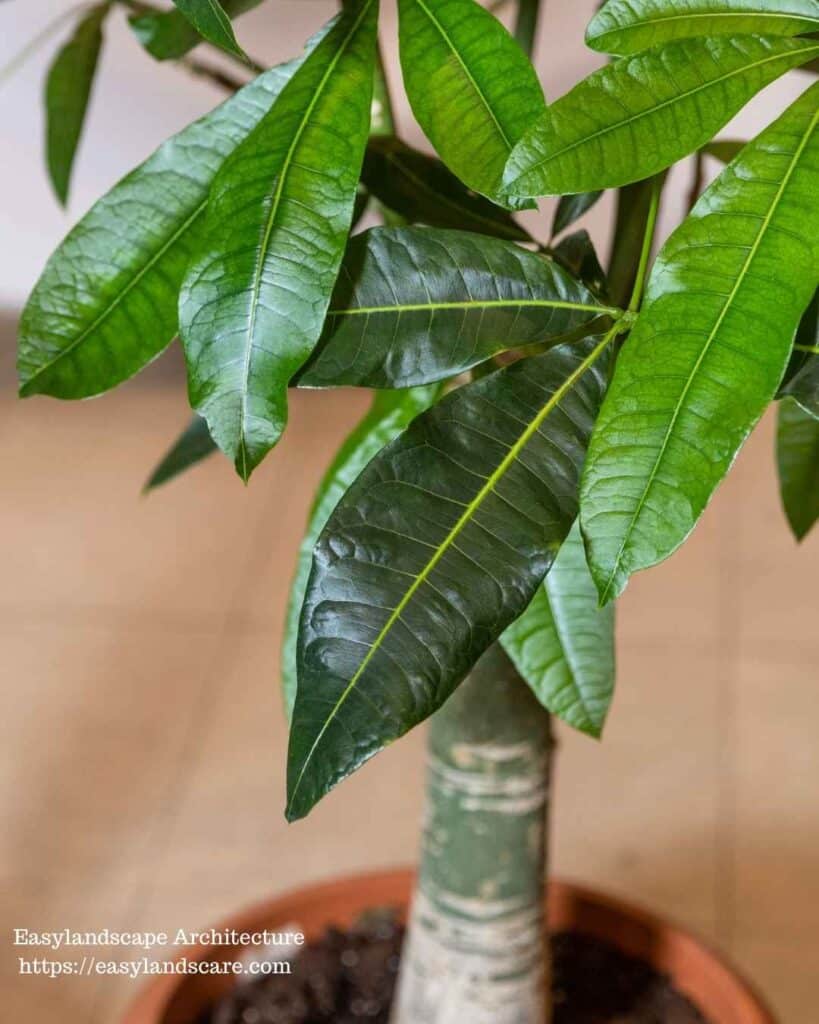
- Provide bright, indirect light and rotate the plant regularly.
- Water thoroughly but allow the top 2-4 inches of soil to dry out between waterings.
- Use a well-draining potting mix to prevent root rot.
- Maintain average indoor humidity and temperature.
- Fertilize lightly during the growing season and avoid over-fertilizing.
- Prune to maintain shape and encourage bushier growth.
Conclusion
The Money Tree is a beautiful and meaningful addition to any indoor space. With its unique braided trunk, vibrant foliage, and reputation for bringing good luck, it’s no wonder this plant is a favorite among plant lovers. By following these Money Tree care tips, you can keep your plant healthy, lush, and thriving for years to come.
Remember, the key to success lies in providing the right balance of light, water, and humidity while avoiding the common pitfalls of overwatering and neglect. With a little attention and care, your Guiana Chestnut will reward you with its vibrant greenery and positive energy, making it a cherished part of your home or office. To discover other indoor plants as beautiful as the spider plant, we recommend reading our article on the Best Indoor Plants: Top 15 Picks and Care Tips

